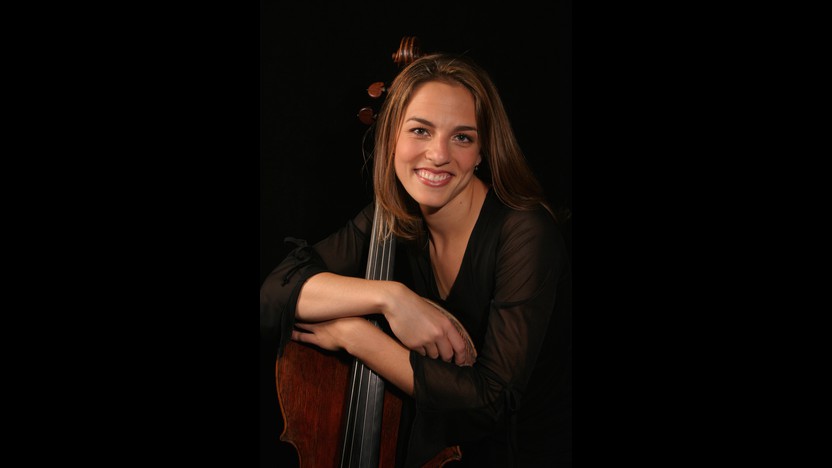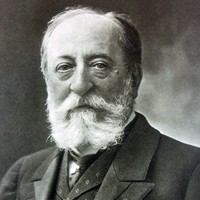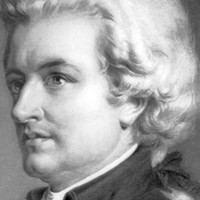Mozart's Symphony No. 40

Sponsored By
- May 16, 2015


Sponsored By


The English composer, pianist, and conductor Thomas Adès has distinguished himself as something of a modern-day wunderkind in the contemporary classical music landscape. Still in his early forties, he has already penned numerous acknowledged masterpieces across genres, from solo and chamber music to symphonic and operatic works; received commissions from such leading orchestras and institutions as the Berlin Philharmonic, Los Angeles Philharmonic, and Carnegie Hall; appeared as pianist and conductor on the world’s most prestigious stages; and is the recipient of the 1999 Grawemeyer Award (for Asyla), the Grammy Award for Best Opera Recording (as conductor of his own opera The Tempest, with the Metropolitan Opera), and other honors.
Adès’s rapid rise to such renown is rooted in his having honed a distinctly personal compositional language and technique from the beginning of his career: structurally sure-handed, colorfully detailed—and, writes British musicologist Arnold Whittall, “often [alluding] to specific models while nevertheless keeping its distance from them.”
One particularly cherished model has been the French Baroque master François Couperin. Adès claims, “My ideal day would be staying home and playing the harpsichord works of Couperin—new inspiration on every page.” His Three Studies from Couperin—one of several works borne of said inspiration—are orchestrations of three short movements from Couperin’s extensive catalogue of music for harpsichord. The titles—Les Amusemens, Les Tours de Passe-passe, L’Âme-en-peine—are Couperin’s. “In composing these pieces,” Couperin noted, “I have always had an object in view, furnished by various occasions. Thus the titles reflect my ideas; I may be forgiven for not explaining them at all.”
While the allusion to a specific model is perfectly explicit, the distance from Couperin is here created by Adès’s ingenious deployment of the orchestra. It is as if a familiar old movie has been psychedelically Technicolored, resulting in a musical statement that is irrepressibly modern—and irrepressibly Adès’s—despite its eighteenth-century source material. The first movement’s pillowy texture owes to the combination of alto and bass flutes, muted strings, and marimba; the clang of anvils delightfully piques the ears. Adès highlights Couperin’s lithe “sleight of hand” with impish interjections of brass and percussion. The suite’s somber finale illustrates “the soul in torment,” but one likewise outfitted in resplendent color.
Patrick Castillo ©2014

Before Camille Saint-Saëns had a widespread reputation as a composer, he was known in Paris and around Europe as a brilliant pianist and, in the view of Franz Liszt, the greatest organist in the world. Saint-Saëns eventually wrote five piano concertos that capitalized on his talents as a performer, and he proved equally adept at showcasing stars on other instruments. He composed the Cello Concerto No. 1 for the French virtuoso Auguste Tolbecque in 1872, at a time when cello was barely recognized as a viable solo instrument. Saint-Saëns went on to compose a second cello concerto and several shorter works featuring the instrument, but it was his first effort that proved to be his most enduring.
The trouble with writing a cello concerto, then and now, is that most of the instrument’s enormous range falls in a register that tends to be sonically crowded. With a piano or violin, the soloist can always loft into an upper range above all accompanying voices. For the cello, even the penetrating top notes collide with the typical range of the treble instruments, and its velvety bass and tenor range is easily drowned out by the low woodwinds and brass. What distinguishes Saint-Saëns’s approach is the transparency of the orchestration, allowing the cello to pass through its full compass without straining to be heard. This was a notably French approach to sound, the opposite of a German preference for thick, robust textures. It is telling that Saint-Saëns composed this concerto in the same period when he was active in founding the Société Nationale de Musique, a group dedicated to advancing French aesthetics in music.
The other distinctive trait of the First Cello Concerto is its fluid form, unfolding in one continuous movement. Saint-Saëns may have been devoted to a French musical style, but that did not prevent him from borrowing good ideas from the Germanic sphere, namely Liszt’s experiments with integrated, cyclical forms. To begin, one stout chord sets up the soloist to deliver an impassioned melody. For the contrasting theme, the cello is able to introduce the tender melody at a piano dynamic, undisturbed by hushed, slow-moving chords from the strings. These competing themes never find complete resolution; instead they make way for an enchanting central section, starting with dry, dance-like passages from the muted strings. The spell breaks with a return to the opening tempo and the first theme. New looks at earlier music round out the concerto’s cyclic form, and flashy solo passages show off yet another side of the cello’s capabilities.
Aaron Grad ©2014

Wolfgang Amadeus Mozart wrote his three final symphonies in the span of eight weeks during the cash-strapped summer of 1788, when he was reduced to pleading with friends for loans, moving his growing family to the suburbs, and pursuing dead-end leads for his music. Whatever opportunity prompted the symphonies seems not to have panned out, and he probably didn’t hear all three before he died. He did revisit the G-minor symphony at some later point to add clarinets and make other adjustments, suggesting that he found an audience for that one at least.
The Symphony No. 40 in G Minor was only the second example that Mozart set in a minor key, and it was a world apart from the Symphony No. 25 that he wrote as a seventeen-year-old. This bigger, bolder, proto-Romantic symphony begins with a peculiar and essential quirk of phrasing that assigns the violas to quiver through one measure of bare accompaniment. When the violins enter a moment later with a theme that sighs three times before leaping up, there is a subtle rub between what our ears hear as the strong beat and the underlying architecture of the phrase. The result is a persistent and restless feeling of propulsion, as if each phrase must scrabble forward to stay ahead of the surge.
The Andante second movement is the only portion of the symphony that moves away from the turbulence of G-minor, and even here patterns of hiccupping rhythms and delayed resolutions recall the stormy first movement. The Menuetto is unusually grave for the portion of a symphony that often serves as a light diversion, with respite only coming in the contrasting trio section. The finale, with its heated dialogue of soft and loud phrases, embodies the passion and drama that Mozart honed on the operatic stage, most recently in Don Giovanni.
Aaron Grad ©2025
Get driving directions and find nearby parking.
Find dining options close to the venue.
View seating charts to find out where you'll be seating.
SPCO concerts are made possible by audience contributions.
For exclusive discounts, behind-the-scenes info, and more:
Sign up for our email club!
